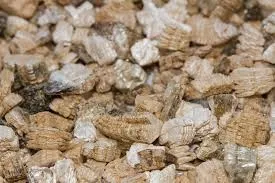Dec . 05, 2024 11:30 Back to list
thermal insulation materials for piping factory
Thermal Insulation Materials for Piping A Comprehensive Overview
In the industrial and construction sectors, thermal insulation is a critical aspect of piping systems. It plays a vital role in maintaining temperature control, enhancing energy efficiency, and reducing heat loss. This article delves into the various thermal insulation materials available for piping, their benefits, and considerations for their application in factory settings.
Understanding Thermal Insulation
Thermal insulation materials serve to resist the transfer of heat between solid objects, liquid systems, or gases. In piping applications, the primary objective is to minimize heat loss from hot fluids and prevent heat gain in cooler systems. This not only helps in maintaining the desired temperature but also contributes significantly to energy savings and operational efficiency.
Common Types of Thermal Insulation Materials for Piping
1. Fiberglass Insulation One of the most commonly used materials, fiberglass insulation is made from glass fibers and is effective in reducing heat transfer. It can be easily molded around pipes and is suitable for temperatures ranging from -20°F to 1000°F (-29°C to 538°C). Furthermore, fiberglass is non-combustible, adding an extra layer of safety.
2. Mineral Wool (Rock Wool) This material is created from natural or recycled mineral resources and is well-known for its excellent thermal and acoustic insulation properties. Mineral wool can withstand higher temperatures compared to fiberglass, making it suitable for high-heat applications, withstanding temperatures up to 1200°F (649°C) without losing performance.
3. Polyurethane Foam Known for its high insulation value, polyurethane foam is often used in high-efficiency applications. It has a lower thermal conductivity compared to fiberglass and mineral wool, making it an effective option for both hot and cold piping systems. However, it may be less resistant to high temperatures, requiring careful application.
4. Cellular Glass This rigid insulation material is produced from recycled glass and is renowned for its moisture resistance and durability. Cellular glass can endure extreme temperatures and is often used in cryogenic piping systems due to its ability to prevent condensation and reduce energy loss.
5. Reflective Insulation Often made from aluminum foil laminated onto a substrate material, reflective insulation works by reflecting radiant heat rather than absorbing it. This is a valuable feature in certain applications, particularly in warmer climates or where radiant heat is a significant factor in thermal loss.
thermal insulation materials for piping factory

Factors to Consider When Choosing Insulation Materials
When deciding on the appropriate thermal insulation material for piping systems, several factors must be taken into account
- Temperature Range Each material has a specific temperature range within which it operates effectively. Knowing the operating conditions of the piping system is essential for selecting the right insulation.
- Moisture Resistance In environments with high humidity or the potential for condensation, moisture-resistant materials are crucial to prevent degradation and maintain thermal performance.
- Fire Safety Various materials have different fire ratings. Opting for non-combustible insulation is often a regulatory requirement in many settings.
- Environmental Impact Sustainable materials and those with lower environmental footprints are becoming increasingly important in modern building practices. Selecting insulation materials that contribute to LEED certification can boost a factory's eco-friendliness.
- Cost-Effectiveness While the initial cost of high-quality insulation materials may be higher, the long-term savings in energy costs can often justify the investment.
Conclusion
Thermal insulation materials for piping play a pivotal role in ensuring energy efficiency and operational stability in factory environments. By understanding the various options available and their respective benefits and limitations, industry professionals can make informed decisions that optimize system performance while adhering to safety and environmental standards. With the right insulation, factories can enhance their sustainability efforts, reduce operational costs, and contribute to a greener future.
-
Durable Building Material for Round Wall Exporters | Custom Shapes
NewsAug.24,2025
-
Tundish Dry Vibrator: Boost Steel Casting Performance
NewsAug.23,2025
-
Thermal Insulation Cups Materials Exporters - Quality & Durable Supplies
NewsAug.22,2025
-
High-Purity Graphitized Petroleum Coke & Low Nitrogen Recarburiser
NewsAug.21,2025
-
High-Performance Fe-C Composite Pellets for BOF
NewsAug.19,2025
-
Tundish Dry Vibrator: Enhance Refractory Life & Casting Efficiency
NewsAug.18,2025
